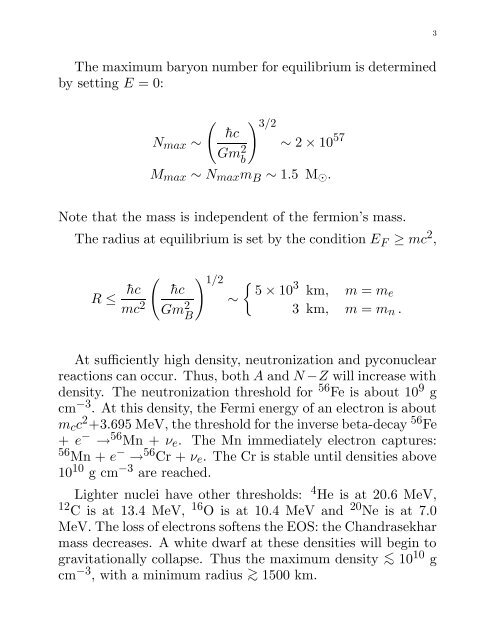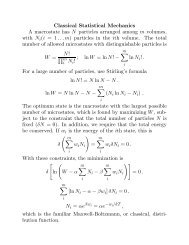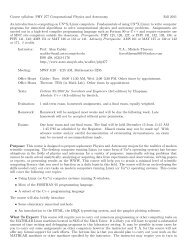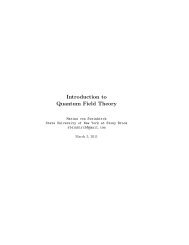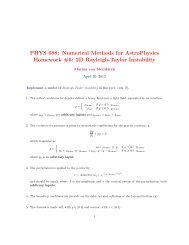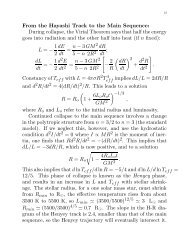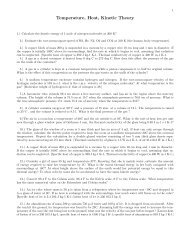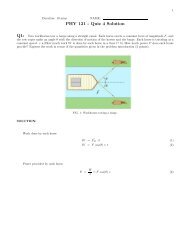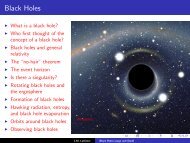Mass-Radius Relation of Degenerate Configurations
Mass-Radius Relation of Degenerate Configurations
Mass-Radius Relation of Degenerate Configurations
You also want an ePaper? Increase the reach of your titles
YUMPU automatically turns print PDFs into web optimized ePapers that Google loves.
3The maximum baryon number for equilibrium is determinedby setting E = 0:N max ∼(¯hcGm 2 b) 3/2∼ 2 × 10 57M max ∼ N max m B ∼ 1.5 M ⊙ .Note that the mass is independent <strong>of</strong> the fermion’s mass.The radius at equilibrium is set by the condition E F ≥ mc 2 ,R ≤ ¯hcmc 2 (¯hcGm 2 B) 1/2∼{5 × 103 km, m = me3 km, m = m n .At sufficiently high density, neutronization and pyconuclearreactions can occur. Thus, both A and N −Z will increase withdensity. The neutronization threshold for 56 Fe is about 10 9 gcm −3 . At this density, the Fermi energy <strong>of</strong> an electron is aboutm c c 2 +3.695 MeV, the threshold for the inverse beta-decay 56 Fe+ e − → 56 Mn + ν e . The Mn immediately electron captures:56 Mn + e − → 56 Cr + ν e . The Cr is stable until densities above10 10 g cm −3 are reached.Lighter nuclei have other thresholds: 4 He is at 20.6 MeV,12 C is at 13.4 MeV, 16 O is at 10.4 MeV and 20 Ne is at 7.0MeV. The loss <strong>of</strong> electrons s<strong>of</strong>tens the EOS: the Chandrasekharmass decreases. A white dwarf at these densities will begin togravitationally collapse. Thus the maximum density < ∼ 10 10 gcm −3 , with a minimum radius > ∼ 1500 km.


